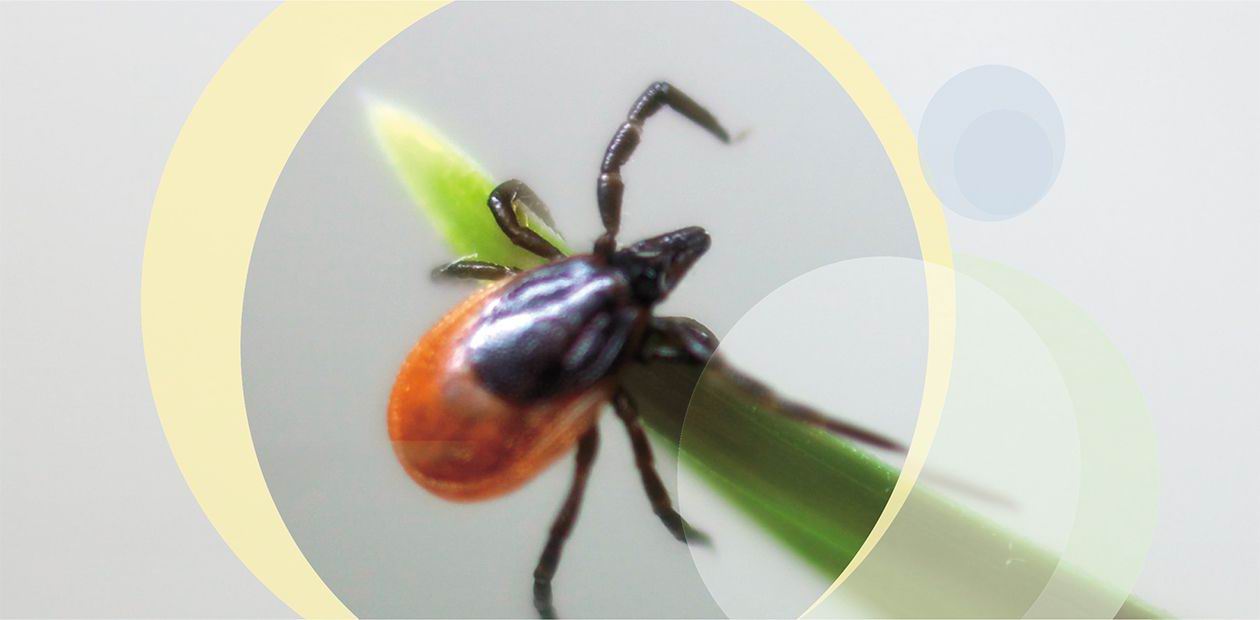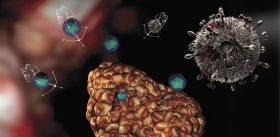Who Needs Prognosis for the Risk of Tick-Borne Encephalitis Infection?
In June 2007, the Chief Sanitary Officer of the Russian Federation G. Onishchenko warned about the beginning of the most severe tick-borne encephalitis epidemic in this country over the last 5 years. In addition to the “traditionally” dangerous regions, Siberia and the Far East, over 40 regions were added to the list of potentially risky territories. The situation was complicated by the fact that the majority of local authorities did not take care beforehand to create the necessary resources of immunoglobulin, virtually the only specific drug against this actually fatal disease.
When reading news about a growth in the number of tick-bitten and infected people, one has a feeling that it refers to a sudden and devastating natural disaster, more unanticipated than a hurricane (as meteorologists usually alert on it in time) but rather like a tsunami caused by an unexpected earthquake in unimaginable ocean depths… However, the agent and vector of infectious brain inflammation that got the name tick-borne encephalitis was discovered by the Far-East expedition of the USSR Narkomzdrav (People’s Commissariat of Public Health) headed by L. A. Zilber*, an outstanding virologist, as long ago as in the 1930s!
Why on earth an outbreak of spring — summer encephalitis 70 years later is regarded as an insidious and unpredictable natural phenomenon? The more so as tick-borne encephalitis virus as well as its vectors, ticks, are our close neighbors in the biocenosis “apartment” and, allow me to observe, quite well-studied neighbors.
*SCIENCE First Hand, 2006, № 6 (11).
The founders of the first city of basic science and education in this country, Novosibirsk Akademgorodok (academy town), had chosen for its construction a beautiful place with mixed pine and birch forests, meadows of flame-colored globeflowers, and the man-made Ob lake. Perhaps, the only disadvantage was an abundance of ticks, entailing a high risk of both human and animal infections with pathogens of various natures, including tick-borne encephalitis virus and borrelia, carried by these arthropods.
However, the problems of this type were solved back at those “blessed” times with the help of a reliable assistant, small aircraft. The children of that time, having never heard the words “tick” and “encephalitis”, used to run joyfully in the neighboring woods gathering fragrant strawberries lavishly seasoned with dichlorodiphenyltrichloroethane (DDT), one of the most ecologically dangerous insecticides, which is able to accumulate, in particular, in human liver, kidney, and brain tissues.
By the late 1970s, the large-scale treatments of the city woods with pesticides were ceased. The arthropods responded adequately, by increasing their population; correspondingly, the number of bitten and infected people commenced increasing. In the summer of 1980, an integrated program for the study of tick-borne encephalitis (TBE) was started according to the order of the Presidium of the Siberian Branch of the USSR Academy of Sciences. The research under this program was headed by V. I. Evsikov and A. V. Kushnir, the director and a deputy director of the Biological Institute (today, the Institute of Animal Systematics and Ecology). One of the items with this program was monitoring of the main components of the natural focus in the forest park zone of the Novosibirsk Scientific Center.
The first and most difficult steps in the organization of regular observations were made by experts from the Biological Institute, namely, virologist N. N. Kharitonova and acarologist (a specialist in ticks) V. F. Sapegina. Professional experience and intuition allowed these researchers to find the key sites in the forest and park zone and specify the range of the main monitoring parameters, which determined the course of “virus—host—vector” monitoring for many years to come.
Danger of Casual Relationships
The methodical approaches to studying the system of infection transmission were selected based on the experience of research into TBE natural foci accumulated by that time mainly by the Soviet science. As is known, TBE virus can live and reproduce in the bodies of various animals; however, its natural vectors — two species of ixodid ticks, taiga tick Ixodes persulacatus Schulze and forest tick Ixodes ricinus L. — play the key role in virus transmission from infected to uninfected individuals.
The developmental cycle of a taiga tick has three stages, each taking usually one year. To molt and pass to the next stage, tick needs another portion of blood. If a tick fails to find a host at any stage, it can overwinter hungry without molting. Thus, its development cycle, normally lasting 3 years, can extend to 5 years. At each stage of its life, a tick can either receive tick-borne encephalitis virus and agents of other transmissible infections with the host blood or, vice versa, infect the host with the virus via its salivary gland secretion.
The former tick species is abundant only in the Urals, Siberia, and the Far East. All the ticks from the genus Ixodes have a complex developmental cycle, which comprises three stages. At each stage of its life, the tick can either receive TBE virus and other agents of transmissible infections with the host blood or, vice versa, infect the host with the virus via the secret of its salivary glands.
Note that the infection with TBE virus does not cause any clinical symptoms in the natural feeders of ticks, which is not amazing at all, as the coevolution of the parasite (in a broad sense of this word) and its host most frequently follows the route of a decrease in the negative effect of parasite on the host organism (Thompson, 1994). The tragic consequences of the human contact with TBE virus are in many respects explainable by the fact that they are “newcomers” to the parasite — host system.
Have you heard that tick-borne encephalitis virus in mammals can be transmitted sexually? At least this phenomenon was discovered when crossing infected laboratory males with healthy females (Gerlinskaya at al., 1997)
Taking into account the tick life cycle and links in the biological community, the researchers selected the main objects for monitoring and the corresponding methods. The abundance of adult ticks and the infection rate with TBE virus were assessed, as well as the population of small rodents, their tick infestation rate, and the presence of the so-called seropositive individuals, i. e., those containing the antibodies to TBE virus in their blood.
In addition, the biological activity of TBE virus isolated from adult taiga ticks was studied from the very beginning, and evaluation of the immunity of background rodent species, main tick feeders at the early stage of its development, was commenced in 1990. Concurrently, molecular biological methods for highly sensitive and specific identification of TBE virus were developed and tested in the joint studies conducted by the Institute of Animal Systematics and Ecology and by the Institute of Chemical Biology and Fundamental Medicine using the field specimens collected (Bakhvalova at al., 1989; Bakhvalova, 1994; Morozova et al., 2002).
The 27 years of continuous monitoring clarified the specific features of distribution and long-term dynamics of taiga ticks in the forest and park zone of the Novosibirsk Scientific Center and the species composition of small mammals (Sapegina et al., 1985; Dobrotvorsky, 1992). Besides, a unique collection of TBE virus strains has been created; analysis of the nucleotide sequence of these strains allowed them to be ascribed to the Siberian genetic type (Bakhvalova et al., 1994, 2000a, 2000b, 2001)
Incubator for Infection
Ten-year observations of the encephalitis focus in question sufficed to reveal some facts going beyond the commonly accepted concepts. Seemingly, can there be a better indicator of infection risk than the number of ticks and their virus infection rate? However, the conventional criteria of encephalitis risk were far from the real situation with the dynamics of encephalitis morbidity in the Sovetsky district of Novosibirsk, where Akademgorodok is located.
It was also discovered that one and two years before a peak in TBE morbidity, the number of larvae and nymphs (early stages of taiga tick development) found on the skin of small mammals was maximum. Moreover, the share of seropositive individuals, i. e., those containing antibodies to TBE virus in their blood, among the feeders was large. What can be the consequences of these two interconnected events?
As is known, when TBE virus lives and reproduces in ticks, its virulence, i. e., the ability to induce the disease, decreases. However, this ability restores quickly when the virus enters the body of a warm-blooded animal, where it starts to reproduce (Chunikhin et al., 1982). Correspondingly, when the proportion of infected small mammals increases, the probability of tick larvae and nymphs to receive a highly virulent strain of the pathogen during their bloody meal sharply increases. These larvae and nymphs in one or two years will develop into adult ticks that carry the most “aggressive” virus in their bodies: their bites will present the highest risk of encephalitis infection.
The fact that morbidity dynamics is, in many respects, determined by the changes in the virus itself was confirmed by the studies of its infective properties, namely, hemagglutination activity (HA) and the virulence of virus isolates recovered in different years. It has appeared that the HA waves coincided with the morbidity dynamics in the population of the Sovetsky district, and the isolates recovered in the years with high morbidity rate exceeded significantly the virulence of the isolates recovered in low morbidity periods (Bakhvalova, 1994; Bakhvalova and Dobrotvorsky, 1994; Moshkin et al., 1998; Bakhvalova et al., 2005).
Thus, a several-year-long monitoring of individual components of this encephalitis focus according to relatively simple parameters — the rates of infestation of small mammals with ticks and TBE virus — has made it possible to predict the notorious encephalitis “epidemics” rather accurately. However, although sufficient for assessing the future infection risk, this prediction is yet a rather simplified description of the reality. Due to the development of molecular genetic methods for detection of various pathogens, the role of small mammals in the circulation of tick-borne infections was recently reevaluated. What have we succeeded in finding out about this natural reservoir of infections, eternal as the world and apparently inexhaustible?
A Testosterone Detonator
According to the monitoring results, the dynamics of encephalitis infection risk in the natural focus is determined, to a considerable degree, by the changes occurring in the virus population. In turn, these changes are determined by the different size of contributions of the main virus hosts — taiga ticks and warm-blooded animals — to its reproduction.
In particular, the joint studies with the Institute of Chemical Biology and Fundamental Medicine have demonstrated that viral RNAs and/or envelope protein of TBE virion (indicating the presence of the virus) are found in the organs of the overwhelming majority of small mammals (Bakhvalova et al., 2001, 2003, 2006). Moreover, this is characteristic not only of the animals trapped during a season of tick activity, but also of those trapped in winter or kept in a vivarium for a long time after trapping, i. e., the animals obviously “free” of ticks. This means that the virus can be preserved for a long time in the body of wild mammals in a persisting (surviving) state, as a rule, without any manifestations. At least, the persisting virus is unable to infect 2-week-old laboratory mice, which are typically sensitive to it.
Shower and Antiperspirant against Ticks
What is the essence of the strategy of female taiga ticks? As is mentioned, they prefer to feed on adult territorial males, whose immunity is inhibited by a high level of the male sex hormone testosterone. Urine marks, used on a regular basis by territorial males to mark their individual territories, can be an odor signal. This was found experimentally when studying the behavioral reaction of ticks to various odor stimuli of warm-blooded animals. A tick moving freely along the edge of a petri dish does not react to the fresh urine of a laboratory mouse (Romashchenko et al., 2006) or a red-backed vole (Dobrotvorsky, personal communication). However, once the litter from a mouse cage with old (about 2—3 days) urine marks was “presented”, 60 % of the experimental ticks displayed the behavioral reaction manifested as an urge towards the source of the odor. Note that the reaction of ticks to the sweat specimens of young men collected onto filter paper also depended on their freshness. The sweat from axillary region was most attractive, especially the specimens obtained from the filter paper that had been kept under the clothes for two days. An increased olfactory attractiveness of stale sweat and urine specimens may be a result of their bacterial transformation.
However, this is not always the case. Our studies have demonstrated that the persisting virus can be activated when the host immune system is suppressed. Moreover, this inhibition can be caused not only with special pharmacological immunosuppressors, but also with a common male sex hormone, testosterone (Bakhvalova et al., 2006).
As everybody understands, this fact is of special significance: the point is that the natural elevation in the secretion of male sex hormones in mammals, including rodents, coincides with the reproduction season. In addition, this is also combined with the inhibition of cell-mediated and humoral immunities in the animals. Moreover, this period most precisely concurs with the period of maximum tick activity.
One more nuance: there is a rule in the ecology of parasite — host interactions stating that 20 % of the most infected hosts “house” 80 % of the parasites of a particular species (Perkins et al., 2003). According to our data, the distribution of red-backed voles (Clethrionomys rutilus Pall.) inhabiting the TBE focus studied with respect to the rate of tick infestation perfectly fits this rule. Naturally, the question arises: What are these most infected individuals?
As is known, the individuals in populations of small mammals differ considerably with respect to behavioral characteristics, such as aggressiveness and territoriality. These distinctions are mainly determined by the differences in secretion of sex hormones and, as it was mentioned above, by the corresponding differences in their immune systems. The contribution to the feeding of taiga ticks depends on this state of individual animals.
So, what have we managed to find out? Mature settled males, which display a minimum humoral immune response to a standard antigenic stimulus, are among the most infected individuals. Compared with the migrating males, the territorial males display a higher infection rate, which at first sight contradicts the generally accepted opinion on a direct correlation between the mobility of animals and the probability to meet ectoparasites.
Do you know that tick-borne encephalitis virus at the initial stage of infection increases the aggressiveness of male rodents as well as the smell appeal to females? Thus, the infected males have a higher chance to give offspring (Moshkin et al., 2002)
But this is only an apparent discrepancy. First, the total activity of males patrolling their own territory can be not lower than that of the migrants. Second, it has been proved experimentally that the suppression of host immunity, including that caused by testosterone administration, increases the time and efficiency of tick feeding (Hughes and Randolf, 2001). And last but not least, the smell of urine marks, which the territorial male constantly leaves on the same routes, can be more powerful “magnets” than episodic urine excretions of the migrating individuals: they indicate that the probability to meet the “prey” in this region is high!
Just as a Phoenix Bird
The data obtained during the monitoring of the epidemiological focus, almost unprecedented in its duration and coverage, have demonstrated that seasonal cycles in the populations of both parasites and their hosts are rather precisely coordinated in time, which provides a stable existence of the tick-borne encephalitis focus in nature.
In populations of small mammals, only those individuals that were born in late summer and failed to reproduce in the year of their birth survive through the winter (Shvarts et al., 1969). The most important factor for their successful overwintering is a reliable immunity that was not weakened by the reproduction processes, which require large resource expenditures. Even if TBE virus finds itself in the blood of such healthy individuals, it will not be able to circulate there for a long time but will successfully “overwinter” in the organs and tissues in a latent state.
Its turn comes in spring when the testosterone concentration in the blood of small mammals increases steeply during their sexual maturation, whereas the immune system is correspondingly inhibited. Concurrently with the virus activation in rodent body, ticks become active in the forest litter and attack most aggressively the mature territorial males. Cofeeding of numerous ticks infesting the same host creates the most favorable situation for virus exchange between the living “cafeteria” and ticks. Note that the ticks having their “meals” close to one another can exchange viruses virtually directly, even without the host blood (Labuda et al., 1997; Randolph et al., 1999; Rosa et al., 2003).
This ancient parasite — host system, which has been established through a long evolution, exists and will exist until the forest litter, meadows of globeflowers, and fragrant strawberries are finally paved with asphalt.
In conclusion, let us list once again some of the main scientific results obtained at the expedition base of the Novosibirsk Scientific Center:
It has been shown for the first time that the characteristics reflecting the intensity of interactions of the warm-blooded hosts with ticks and tick-borne encephalitis virus are of highest value for the prediction of infection risk.
It has been shown for the first time that the reason underlying the annual variation in the infection danger of a natural tick-borne encephalitis focus is the time-dependent variation of infectious characteristics of the virus population.
Due to molecular genetic detection of tick-borne encephalitis virus, we have succeeded in assessing the actual rate of virus carriage in populations of small mammals and ticks; it has been found that these values are by one order of magnitude higher than the data of conventional biological testing.
The intrapopulation factors contributing to the variation in immunoreactivity of rodents have been analyzed for the first time; as well as the key role of reproductive immunosuppression in the activation of persisting tick-borne encephalitis virus has been experimentally proved.
When studying the olfactory reactions of ticks, the substances promising for the development of preparations for controlling the behavior of these arthropods have been isolated.
Editorial
As is known, the manufacture of anti-TBE immunoglobulin is no quick and simple matter: this preparation is still produced exclusively from the donor blood of tick-borne encephalitis vaccinees; therefore, this drug should be ordered in advance. Indeed, people go fishing or picnicking every year, and ticks have no vacations. Consequently, medical institutions should always have at hand adequate resources (easy to calculate) of immunoglobulin, so that all tick-bitten people could be given the necessary preventive aid. However, on the threshold of a forecasted morbidity peak, the tactics must be different, as the treatment of encephalitis requires a considerably larger amount of the preparation.
Luckily, the criteria developed by our scientists make it possible to predict the morbidity peak one or two years before it takes place! By the way, it is possible during this time not only to order the necessary amount of immunoglobulin but also to organize sanitary education activities with a view to popularizing preventive vaccination, since vaccination against encephalitis must be commenced in winter, when the arthropod Draculas sleep calmly in the forest litter.
Certainly, any sensible person who has familiarized himself with the results obtained by our specialists will have no doubts that such distinct objective parameters for determining the danger of an encephalitis focus and the schemes for predicting potential epidemics of this menacing disease should be expediently and gratefully used by appropriate authorities. However, what happens actually?
Just recall the tragic statistics of this summer, to which the Novosibirsk oblast has contributed despite the unique long-term monitoring of the epidemiological focus conducted there. The only issue that is of interest to the local sanitary and epidemiological surveillance services is the forecast of tick abundance, even though the researchers involved in this problem explain every year, time and again, that in this territory fluctuations in tick population are in no way an epidemiologically significant characteristic.
What happens behind the walls of establishments vested with powers, as well as who and how decides when the anti-TBE immunoglobulin must be ordered and purchased and in what amounts, is still a mystery, at least for the common people, for scientists, and even for the Chief Sanitary Officer of this vast country. We cannot but hope that “the voice in the wilderness” will be heard at last, and tick-borne encephalitis will cease to be an unpredictable catastrophe.
This paper is published according to the collective monograph “The Nature of Akademgorodok: 50 Years Later” (I. F. Zhimulev, ed., 2007, in press).


















